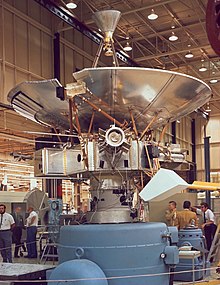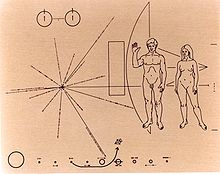Our website is made possible by displaying online advertisements to our visitors.
Please consider supporting us by disabling your ad blocker.
Pioneer program


The Pioneer program is the name of a few unmanned space missions done by NASA between 1958 and 1978. The best-known of these probes were Pioneer 10 and 11, launched in 1972 and 1973 respectively. Both carried a plaque as shown.
The first spacecraft in Pioneer program, Pioneer 0 was launched on August 17, 1958. 77 seconds after launch the Thor engine failed and a spacecraft has failed at launch. The next spacecraft, Pioneer 1, was the first spacecraft in Pioneer Program to be launched successfully, on October 11, 1958. Like its successor, Pioneer 2, which was launched on November 8, 1958, it was launched to the Moon. The most famous spacecraft in Pioneer program, Pioneer 10 and Pioneer 11 were launched on March 2, 1972 and April 5, 1973 respectively. Both reached the Jupiter system on December 4, 1973 and December 2, 1974 respectively. Pioneer 11 became the first spacecraft to approach Saturn, on September 1, 1979. Both spacecraft aren't functional anymore, the last signal from Pioneer 11 was received on Earth on November 24, 1995 at a distance 44 AU (7 Billion km; 3 Billion miles), while the last signal from Pioneer 10 was received on January 23, 2003 at a distance of 82 AU (12 Billion km; 7.6 Billion miles) from Earth. Pioneer 10 was the most distant spacecraft from Earth until February 17, 1998 when it was passed by Voyager 1 and will be the 3rd farthest spacecraft from Earth once it'll be passed by Voyager 2 around March 2023.
Previous Page Next Page


